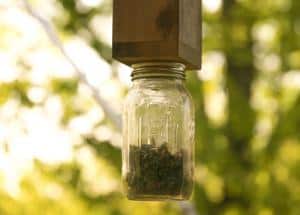Some bees are very useful insects, and some of them, like carpenter bees, can bring about destruction to your home. They drill hundreds and hundreds of holes in the deck of your house, specifically burrowing into softer woods like cedar and pine and creating lots of damage.
It’s very important to remove them in time to prevent infestation, and so learning how to make a carpenter bee trap is the first thing you should do.
It’s easy and is proven effective against the bee’s infestation. Making a DIY carpenter bee trap is also a good project you might find enjoyable.
A guide to making a wood bee trap at home
To build a carpenter bee trap you need simple DIY tools like a drill or a circular/hand saw. All you need to do is put together a block of wood and drill some holes in it. At the bottom of a trap, you’ll attach a glass jar, that will be the source of light that will trap the bees.
Why are carpenter bees damaging wood?
Carpenter bees cause an incredible amount of damage to your house. They dig holes through various wooden structures and try to lay eggs there. While they do not eat wood, and only drill it to create space to lay their eggs.
They often find older holes and drill them further, and the damage this removal of wood causes the wooden structure to fail eventually.
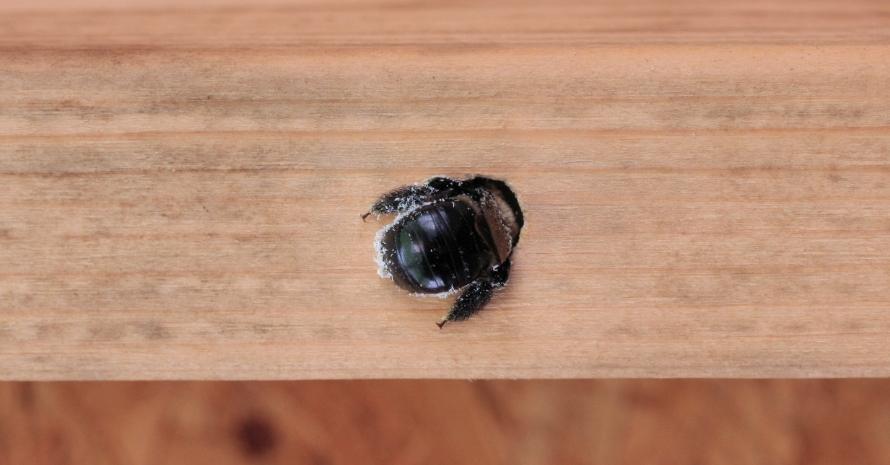
So learning how to make a carpenter bee trap is going to be incredibly useful to prevent their infestation and avoid using chemical insecticides. Annoying as they are, these bees are not really dangerous and are important pollinators.
First, let’s look at what materials you’ll need to build a carpenter bee trap at home.
Materials that you will need to make carpenter bee traps
- 4х4 piece of lumber (untreated cedar or pine)
- circular saw
- drill
- hammer
- a regular mason jar with a lid
- small chain, wire or cable
- measuring tape
- ½ inch drill bit
- nails
- hook
- 6-inch wide plank of wood
- honey or sweet water
When preparing to make a homemade carpenter bee trap, it’s better to purchase all your materials in time, so that you’re not forced to interrupt your project because you need to make a trip to the hardware store.
Because you need saws and drills and other electrical instruments to build a carpenter bee trap, remember to use protective gear, like gloves, dust mask and safety goggles.
Your work surface ideally should be far away from the place where you’re planning to install your wood bee trap because you don’t want to agitate the bees.
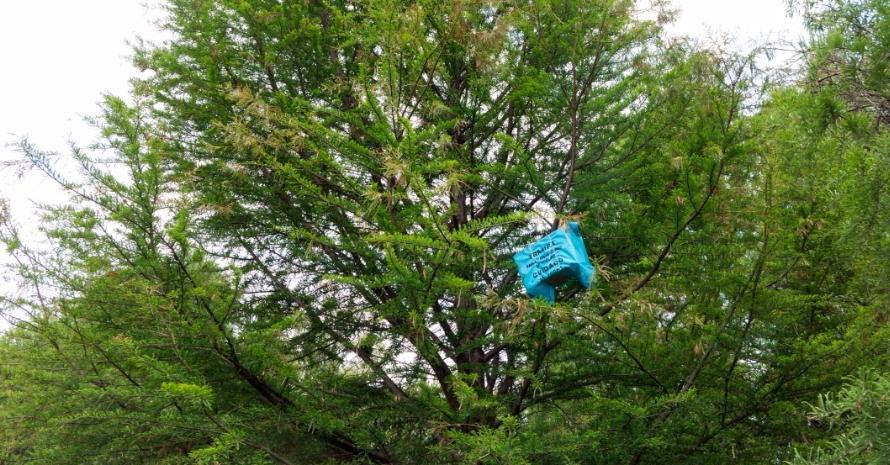
You should also straight away add a drop of honey or sweet water to the mason jar to act as a lure. Also when your homemade carpenter bee trap will be ready for installation, wear long-sleeve clothing and long pants to protect your skin from potential stings.
Though carpenter bees are not aggressive, it’s better to avoid the risks altogether.
Step by Step Guide on How to Make a Carpenter Bee Trap
Step 1: Cut your wood
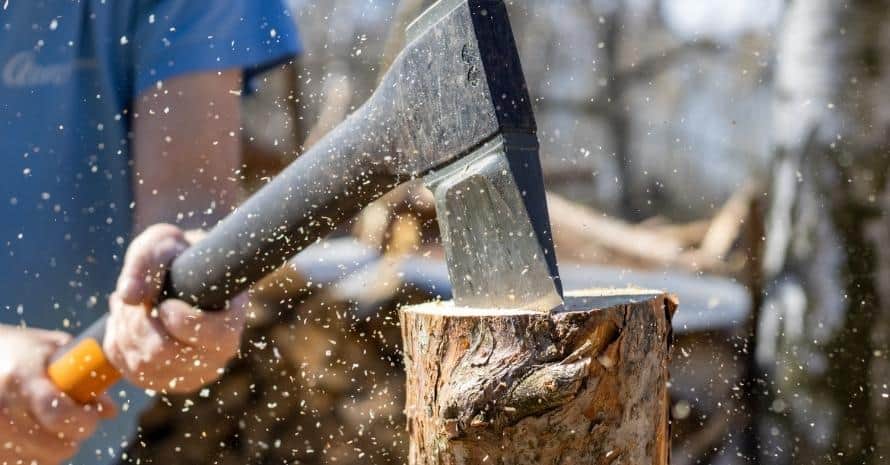
You need to cut your 4×4 piece of lumber into pieces around 5-8 inches in length, at least 4 inches thick. Measure it precisely with a measuring tape and make pencil marks to ensure you get an even result. If you have more wood left – use it to make another wood bee trap.
Step 2: Create a base hole
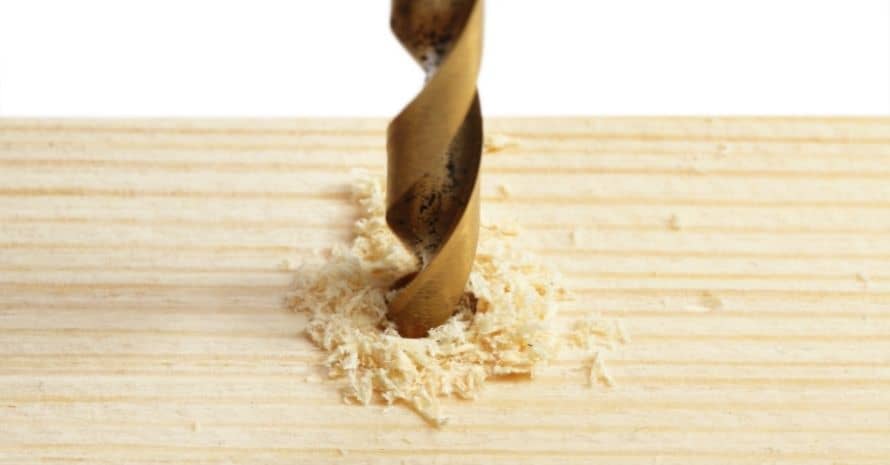
You need to make a tunnel through which carpenter bees will enter the wood bee trap. Choose your ½ inch drill bit, attach it to your power drill and drill all the way through. A hole should go through all the length of the wood.
Step 3: Make 3 side holes
The next thing you need to do is create 3 side holes at a 45-degree angle. Take the three long sides of the block and using the same ½ inch drill bit make 3 holes at a 45-degree angle.
This will make additional entry points for the beesa and will make it like a tunnel. The angle should be aimed upward, otherwise the sun will be able to shine through it.
Step 4: Make a roof
Take your 6-inch wide plank of wood and measure how much you need to make a roof for your wood bee trap. You should have about 1 inch overhang on each side.
Once you’ve cut it properly, place it atop of the block of wood, make sure the side holes are still aimed upward, and nail it to the block with a hammer.
Step 5: Make a hole in a mason jar lid
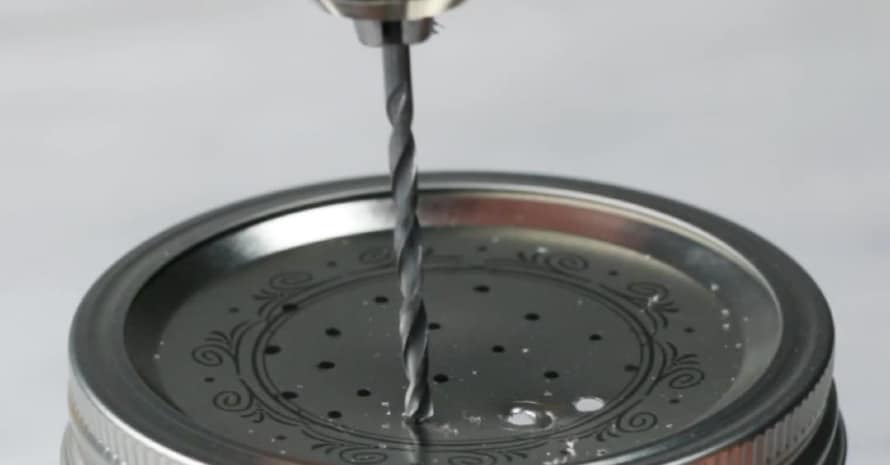
Place the metal lid over the hole on the bottom of your block and mark the center of the lid with a pencil. Use the same drill bit to make a hole in the jar lid that should be placed in the center.
Step 6: Attach the lid to the base
Take a hammer and nail the lid with the hole in the center to the base of your block. You should try to match the hole in the lid and the central hole of your block align and that the lid is nailed tight to the jar to prevent any bees slipping out of the trap.
Step 7: Screw the jar with honey

Pour a drop of honey or sweet water to the bottom of your jar and screw it onto the lid. Make sure you screw it on tight.
Step 8: Attach the hook
With a measuring tape find the center of your lid, to ensure that it hangs straight and mark it to attach an eye hook screw. If you want to use a larger hook you can drill a small hole to attach it.
Step 9: Hang the wood bee trap
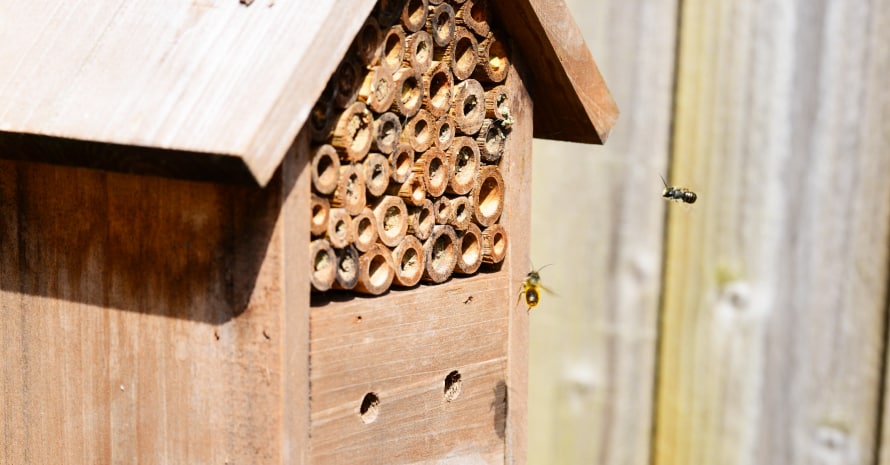
You should try to choose the spot which is the closest to the infestation site. and carefully hang the trap there so that the side without a hole is against the house or a pole you attach the bee trap to. Make sure it’s secured firmly.
How does a homemade carpenter bee trap work and how to use it correctly?
A boring bee trap can be incredibly effective against bees. When used correctly, what it does is act like a nest where carpenter bees burrow into an existing hole and encourages them to get into pre-made tunnels and investigate the trap.
Because they like to burrow into soft wood, choosing an untreated wood like pine is excellent, as the bees will likely choose it to make tunnels.
Once they get through the side holes, they’ll be going up to explore the main channel. This is why we drill the side holed aimed upwards. The holes will not let in the sunlight, but the mason jar will. The bees will think that it’s the exit and will naturally head over there, where they’ll be trapped.
A boring bee trap is designed so that the bees fly down to the jar, and once they go past the lid they’re effectively trapped. They cannot fly directly up, and they use the light source as a navigation point where they head to once they find an ideal place to lay their eggs. Once they reach the jar, they cannot escape it.
A drop of honey or sweet liquid is not necessary to make carpenter bee traps, but it can help you jump start the process. Once your trap starts to catch some bees, the rest will also come, because of the pheromones that the dead bees exude.
DIY Carpenter Bee Trap FAQ
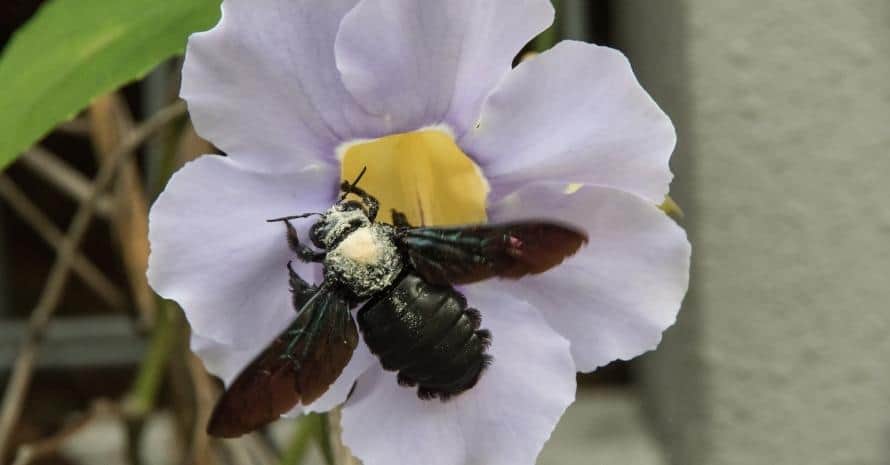
What is the best wood to make carpenter bee traps?
They’re attracted to the soft wood, so using untreated lumber like cedar or pine will be the best option.
How often should I empty my homemade carpenter bee trap?
When you install your wood bee trap you expect it to work all season for you. Emptying it regularly is tricky, because you’re not really sure whether all the bees are dead or alive, and if you unscrew the jar, some of them might fly out.
So ideally you should empty it in the fall when all the carpenter bees will surely be dead.
Where do you place a diy carpenter bee trap?
If you have an active infestation, before you hang a boring bee trap at your house you should plug up the holes they’ve previously made. After you do that, you should hang your trap directly over the bee nest.
If you don’t have an active infestation, you should look for strategic places to hang the homemade carpenter bee trap, like corners and peaks of the building and try to use a sunny spot, as they are naturally attracted to warmth.
Conclusion: why you should build a carpenter bee trap.
Getting rid of carpenter bees is actually quite easy if you make carpenter bee traps. The whole process only requires the most basic DIY tools from you and is incredibly easy, all you need to do is drill some holes in the block of wood and attach a mason jar to it.
What it will do is trick the bees into thinking this is a potential nest, and eventually they’ll be trapped. Using a diy carpenter bee trap is an ecologically safe option and will not harm you, your pets, children and other useful insects.
Have you ever had a problem with carpenter bees? Tell me about your experience in the comments down below!
Also read:
- How to Get Rid of Bees
- How to Get Rid of Ground Bees
- How to Get Rid of Sweat Bees
- Citrus Spray for Carpenter Bees
- Carpenter Bee Trap Bait
- How to Keep Bees Away
- Bumble Bee vs Carpenter Bee
- How Do Carpenter Bee Traps Work
References
- Get Rid of Carpenter Bees? Yes, Please! (Prepared by Gary Alpert, Museum of Comparative Zoology, Harvard University. Updated 2015 by Matt Frye, New York State Integrated Pest Management Program, Cornell University)
https://ecommons.cornell.edu/bitstream/handle/1813/43827/carpenter-bees-FS-NYSIPM.pdf?sequence=1 - All Buzz. No Sting. Carpenter Bees Do Just What Their Name Suggests (Mary M. Woodsen)
https://blogs.cornell.edu/nysipm/2016/05/27/all-buzz-no-sting-carpenter-bees-do-just-what-their-name-suggests/ - Carpenter Bees (Richard Houseman Urban Entomology State Specialist Division of Plant Sciences)
https://extension.missouri.edu/publications/g7424

